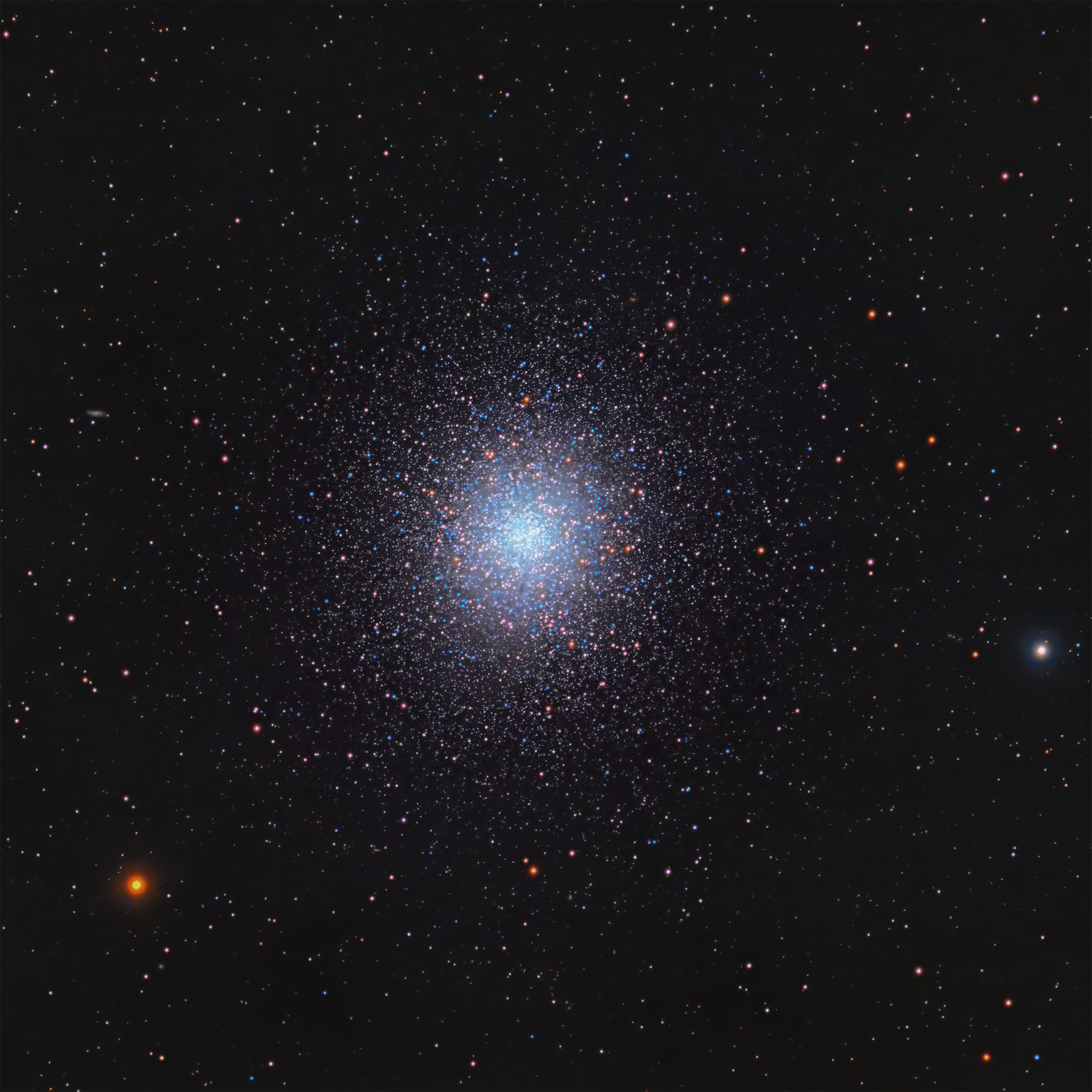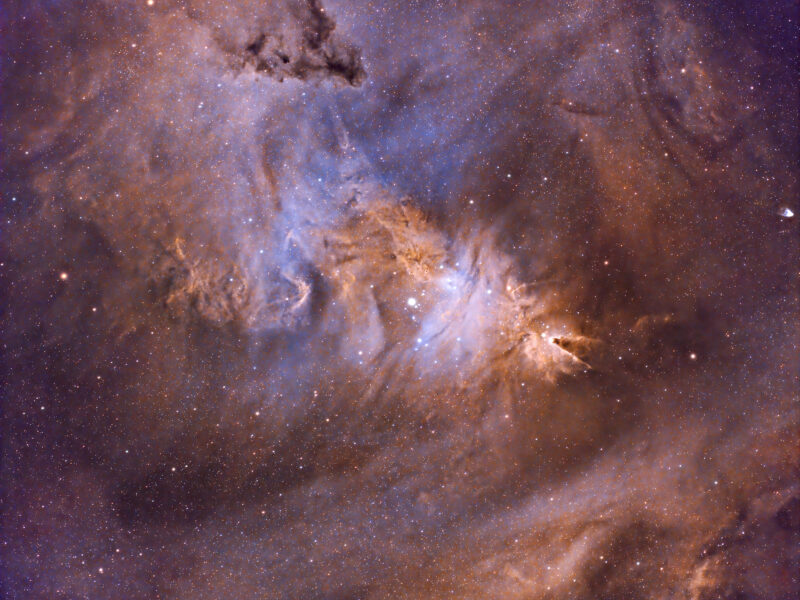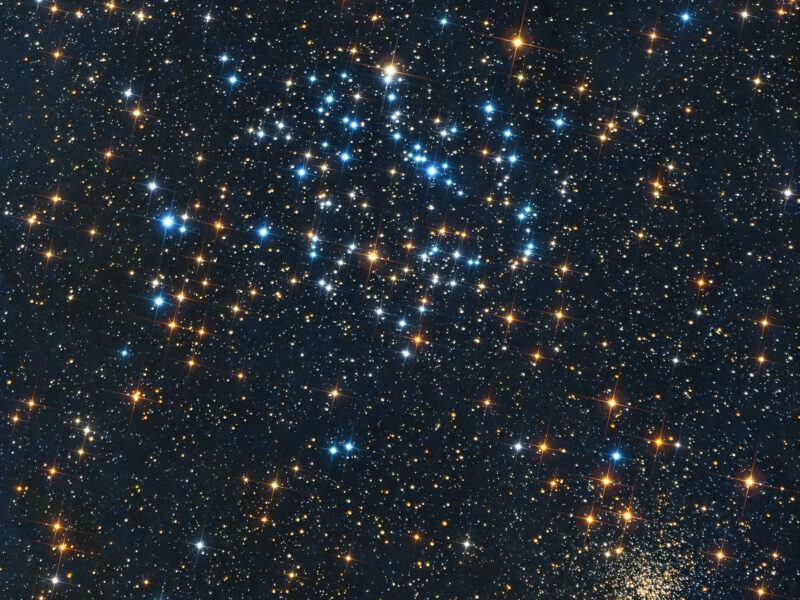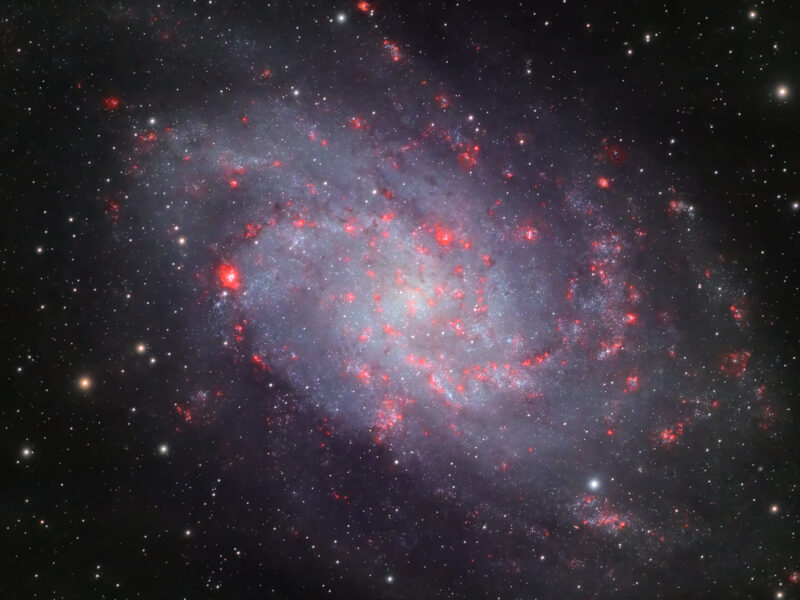In the months of June and July, there is not much to shoot in the sky besides globular star clusters like M13 (a.k.a The Great Hercules Cluster). There is M10, M5, M92, M56 and a whole bunch of other clusters, but nothing is as awesome as M13.
It’s so awesome that this is my 3rd time shooting it. Okay, maybe it’s just my 2nd time as the first year was a single sub and then I realized it was too small and called it quits.
I had my pick of the clusters this year and for some reason I decided to do M13 again. Part of this was based on my equipment. The largest scope I have is 805mm and although I use an ASI533 camera, the field of view at .80 is just not enough for smaller clusters like M56. I do plan to get a Celestron EdgeHD 8, but I’m still a ways off from obtaining that from a financial perspective. The second reason is really because of the first reason. No other cluster that is a good fit for my equipment seems quite as appealing as M13. I will likely explore shooting M10 or M5 next year at this time since they are both larger clusters, but I decided to give the Hercules Cluster a whirl again.
Besides globular clusters, there are also amazing objects like Rho Ophiuchi at this time of year, but I and many others simply don’t have the landscape requirements to capture those low hanging objects in the southern sky. I think next year I’ll need to find a nice spot to shoot Rho Ophiuchi like Astro Backyard recently did, but for now, I will settle for M13 again.
When I shot M13 last year, I only shot 3.5 hours of data. There was still a lot of opportunity to make this better. So, I decided I wanted to shoot 12 hours this year. Unfortunately, that turned out to be 10.6 in the end. I decided there was a point of diminished returns and 10 hours may be that point, which is why I stopped there.
Pixinsight Steps
I shot this in mono using my ASI533MM camera. I shot roughly 5 hours of luminance and 5 hours of RGB. The Pixinsight process for this was rather simple:
All Master Files (Red, Green, Blue and Luminance)
- Dynamic Crop
- Dynamic Background Extraction
- Deconvolution (I use Blur Xterminator)
RGB
- RGB Combine via Channel Combination for RGB
- Spectrophotometric Color Calibration
- Multiscale Linear Transform (for noise reduction on the combined RGB image
- Multiple Histogram Transformations
Luminance
- Multiscale Linear Transform
- Multiple Histogram Transformations
RGB & Luminance Combined
- Use LRGB Combination to merge Luminance with RGB now that both images are in a non-linear state
- Use Curves Transformations as you see fit to bring out the most in the image. I masked the core and then used Luminance in Curves Transformation to bring out the maximum number of stars without blowing the core.
- Use Color Saturation to boost the star colors
- Crop as you see fit. I cropped out quite a bit to compensate for my Telescope’s mere 805mm.
M13 Looks Better with More Data
I was skeptical as to whether this would move the needle with more data as stars are bright and don’t necessarily require a lot of shooting time. Things that are different compared to last year’s photo:
- I love the faint galaxy on the left of the photo which you can clearly see due to the additional hours.
- Everything seems a lot more colorful than it did last year. This could have been my skills with processing, but I do think more data helped this.
- The large star in the bottom left (for better or worse) is a lot more robust. It almost feels 3D and has an apparent halo, but I didn’t want to waste my time fixing that.
- It looks like there are a lot more stars than last year which was a result of the additional hours.
It was fun shooting this again, but I must say – I hope I don’t end up doing it again next year. By next year, I hope to have a larger telescope or travel and take something like Rho Ophiuchi.



